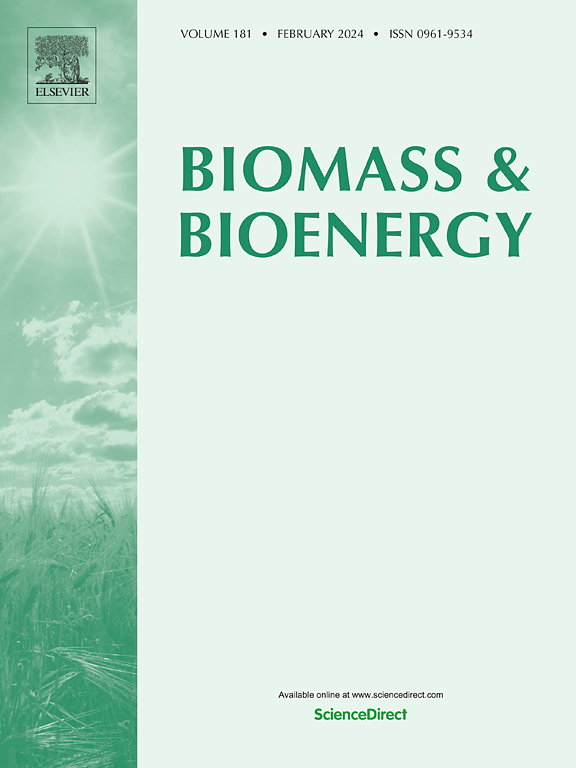Fe-modified catalytic carbons for enhanced CO2 gasification: Influence of carbon source and operating conditions
IF 5.8
2区 生物学
Q1 AGRICULTURAL ENGINEERING
引用次数: 0
Abstract
In this study, we present results of characterization and reactivity of Fe-doped carbonaceous materials during their catalytic gasification with CO2. The samples include carbons derived from the thermal treatment of lignocellulosic residues pine sawdust (PiDC) and almond shells (AlDC) and a commercial graphite (AG) used for comparison. Iron-supported samples (Fe/PiDC, Fe/AlDC, Fe/AGC) were prepared by impregnating the raw materials (pine sawdust, almond shells and graphite) with a Fe precursor, followed by thermal decomposition under a reducing atmosphere. Characterization results revealed that Fe incorporation significantly influences the textural properties of the resulting carbonaceous materials. Specifically, Fe doping increased defect density and surface roughness while reducing microporosity, particularly in biomass derived carbons, as the Fe content increased. Dynamic gasification tests demonstrated that Fe enhances the reaction rate and lowers the onset temperature. Optimal gasification performance was achieved with intermediate Fe loadings maximizing catalytic efficiency while preventing rapid deactivation of Fe nanoparticles. Within the temperature range of 850–950 °C, nearly complete gasification was achieved, with residual content minimized to 10 % for Fe(4.2 %wt)/AGC, 16 % for Fe(2.4 %wt)/PiDC and 13 % for Fe(3.2 %wt)/AlDC. However, higher Fe loadings and temperatures exceeding 900 °C led to accelerated Fe deactivation due to sintering and oxidation. At CO2 concentrations below 8.3 %, these adverse effects were mitigated, optimizing the gasification rate. These findings underscore the critical interplay between Fe dispersion, carbon structure and gasification conditions, offering valuable insights for designing efficient Fe-based catalytic systems for CO2 valorization in sustainable energy applications.

求助全文
约1分钟内获得全文
求助全文
来源期刊

Biomass & Bioenergy
工程技术-能源与燃料
CiteScore
11.50
自引率
3.30%
发文量
258
审稿时长
60 days
期刊介绍:
Biomass & Bioenergy is an international journal publishing original research papers and short communications, review articles and case studies on biological resources, chemical and biological processes, and biomass products for new renewable sources of energy and materials.
The scope of the journal extends to the environmental, management and economic aspects of biomass and bioenergy.
Key areas covered by the journal:
• Biomass: sources, energy crop production processes, genetic improvements, composition. Please note that research on these biomass subjects must be linked directly to bioenergy generation.
• Biological Residues: residues/rests from agricultural production, forestry and plantations (palm, sugar etc), processing industries, and municipal sources (MSW). Papers on the use of biomass residues through innovative processes/technological novelty and/or consideration of feedstock/system sustainability (or unsustainability) are welcomed. However waste treatment processes and pollution control or mitigation which are only tangentially related to bioenergy are not in the scope of the journal, as they are more suited to publications in the environmental arena. Papers that describe conventional waste streams (ie well described in existing literature) that do not empirically address ''new'' added value from the process are not suitable for submission to the journal.
• Bioenergy Processes: fermentations, thermochemical conversions, liquid and gaseous fuels, and petrochemical substitutes
• Bioenergy Utilization: direct combustion, gasification, electricity production, chemical processes, and by-product remediation
• Biomass and the Environment: carbon cycle, the net energy efficiency of bioenergy systems, assessment of sustainability, and biodiversity issues.
 求助内容:
求助内容: 应助结果提醒方式:
应助结果提醒方式:


